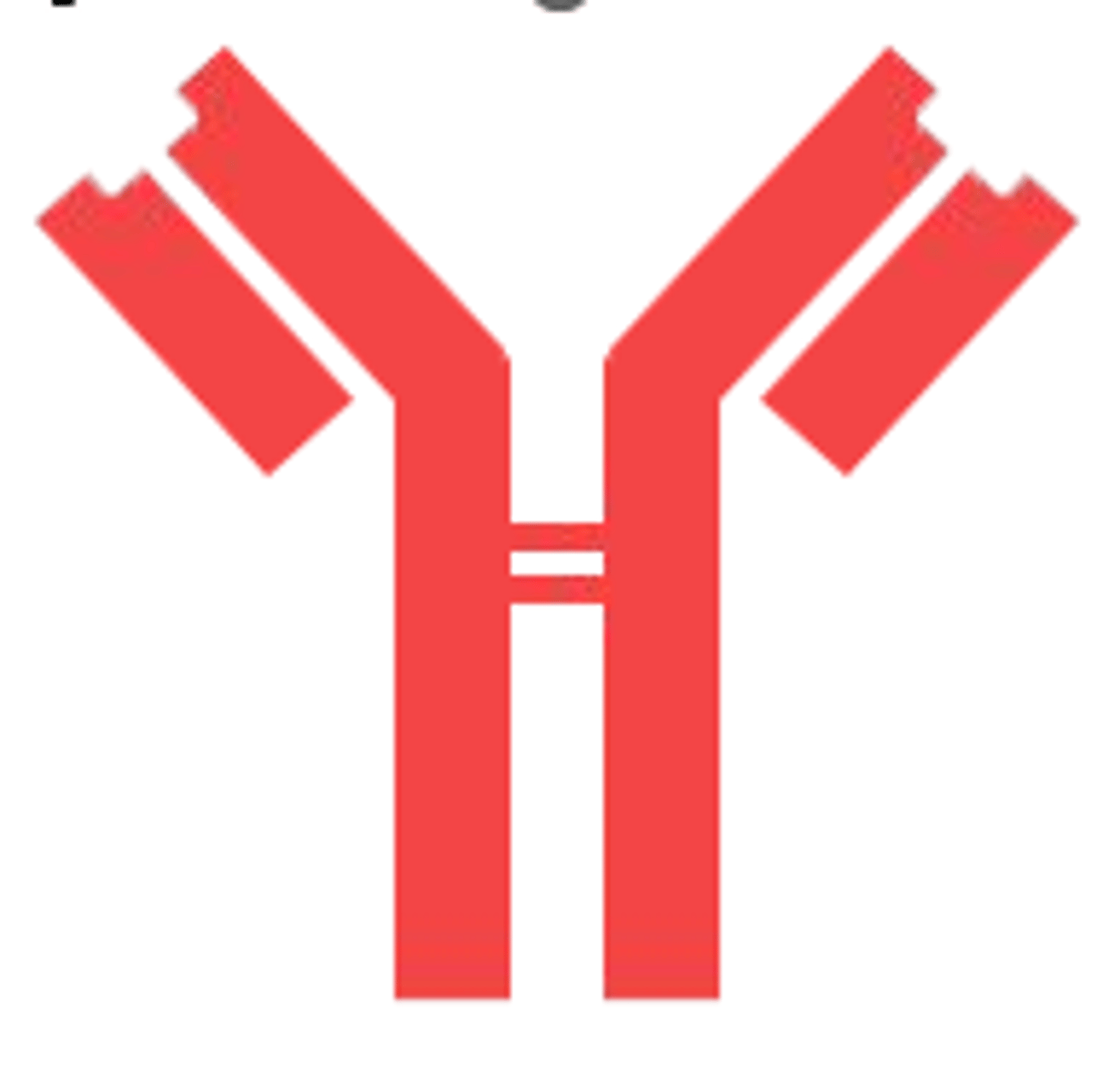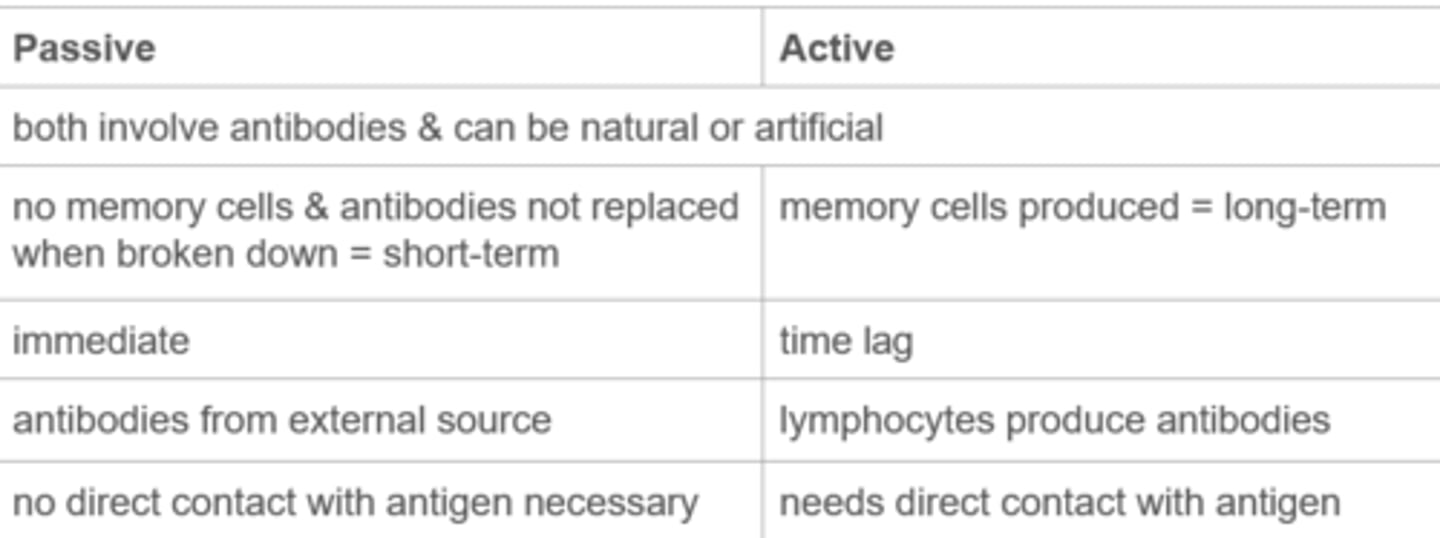Communicable Diseases, Disease Prevention And The Immune System: Biodiversity, Evolution & Disease: Biology OCR A Level
1/43
There's no tags or description
Looks like no tags are added yet.
Name | Mastery | Learn | Test | Matching | Spaced |
|---|
No study sessions yet.
44 Terms
Name 4 groups of pathogens that can cause communicable diseases.
● bacteria
● fungi
● protoctista
● viruses
How does Mycobacterium tuberculosis cause disease?
1. Triggers inflammatory response by infecting phagocytes
in lungs.
2. Infected phagocytes are sealed in waxy-coated tubercles so bacteria remain dormant. First infection has no symptoms.
3. If another factor weakens immune system, bacteria become active & destroy lung tissue.
How does HIV result in the symptoms of AIDS?
1. Attachment proteins bind to complementary CD4 receptor on TH cells.
2. HIV particles replicate inside TH cells, killing or damaging
them.
3. AIDS develops when there are too few TH cells for the immune system to function.
4. Individuals cannot destroy other pathogens & suffer from secondary diseases/ infections. May cause death.
How does the tobacco mosaic virus cause disease?
Affects plants. Mainly transmitted via infected sap.
Contains ssRNA, which is directly transcribed by host cell to assemble new virions.
Virions enter other cells via plasmodesmata then enter xylem & phloem.
Causes stunted growth & mottled leaves.
How does the influenza virus cause disease?
Transmitted via: droplet infection, contact with mucus containing virus, zoonotic infection, contact with fomites.
Injects viral RNA into ciliated epithelial cells of throat & lungs. Viral RNA hijacks cell biochemistry to produce new virions. Cell lysis releases virions.
5-7 days of headache, coughing, sneezing, sore throat, vomiting, fever, muscular/joint pain.
What causes malaria?
Female Anopheles mosquito acts as vector for Plasmodium spp. protoctista when it transfers saliva to another organism during feeding.
Parasite reproduces asexually in red blood cells in liver, causing lysis.
What causes potato/ tomato late blight? What causes ring rot of potatoes?
Blight: The protoctista Phytophthora infestans behaves similarly to a fungus. Mainly transmitted via spores.
Ring rot: Sepedonicus subspecies of the bacterium Clavibacter michiganensis. Mainly transmitted by planting infected seeds/ contact with fomites.
Plant-to-plant transmission is rare.
What causes bacterial meningitis?
Often meningococcal bacteria A, B, C, W, X, Y, Z. Also caused by pneumococcal bacteria & Haemophilus influenzae type b (Hib) bacteria. Affects meninges (protective membranes around brain).
Transmitted by droplet infection & direct contact with saliva
e.g. kissing. Usually spread by carriers of the bacteria who are not ill & occasionally by individuals with meningitis.
Describe 3 fungal infections.
The sac fungus Mycosphaerella fijiensislack causes the leaf-spot disease black sigatoka in banana plants.
About 40 types of fungi cause ringworm. Transmitted by contact with fomites, zoonotic infection, direct contact with infected individuals. Particularly affects cattle.
Athlete’s foot in humans (tinea pedis) is caused by a range of fungi which can also affect hands or nails.
How are communicable pathogens transmitted directly?
● Inhalation (droplet infection).
● Skin-to-skin contact or exchange of fluids.
● Penetrate skin actively using enzymes or passively through wounds, hair follicles or sweat glands.
How are communicable pathogens transmitted indirectly?
● Consumption of contaminated food & drink.
● Via a vector e.g. mosquitoes transmit Plasmodium parasite.
● Spores.
How do living conditions affect disease transmission?
Overcrowding increases direct transmission.
Climate determines which organisms can survive e.g. malaria is more prevalent in tropical countries, where mosquitoes (the vector) can breed.
Social factors influence how quickly people are treated, which can increase/ decrease direct transmission.
Name 4 physical barriers to pathogen entry in plants.
● cellulose cell walls
● lignified layer
● waxy upper cuticle
● old vascular tissue is blocked to prevent pathogens from spreading inside the plant
Describe 2 mechanical responses to infection in plants.
Guard cells close stomata.
The thick polysaccharide callose is produced & deposited between the cell wall & plasma membrane to increase entry distance/ limit spread.
What is necrosis?
Injury activates intracellular enzymes in plants that kill cells near the site of infection to prevent pathogen from spreading.
Necrosis of woody tissue is known as canker.
Describe the chemical defences plants use against pathogens.
● Terpenoids (essential oils) e.g. menthols act as antibacterials.
● Phenols e.g. tannin inhibit insects from attacking by interfering with digestion.
● Alkaloids e.g. caffeine & morphins deter herbivores from feeding because they taste bitter.
● Defensins (cysteine-rich proteins) inhibit transport channels.
● Hydrolytic enzymes e.g. chitinases break down cell wall of invading organisms.
Name 5 barriers to infection in animals.
● Skin is tough keratin layer.
● Blood clotting prevents pathogens from entering through skin lesions.
● Hydrochloric acid in stomach kills bacteria.
● Harmless bacteria in gut & on skin surface increase interspecific competition with pathogens.
● Mucous membranes trap pathogens and may secrete antimicrobial enzymes.
What are expulsive reflexes?
Body attempts to force foreign substances out:
● Irritation of mucous membranes in nostrils causes sneezing.
● Irritation of ciliated epithelium in respiratory tract causes coughing.
Name 4 ways the nonspecific immune system responds to infection.
● inflammation
● phagocytosis
● digestive action of lysozymes
● production of interferon (antiviral agent)
Outline the process of inflammation.
1. Damaged vessels release histamines, causing vasodilation.
2. Blood flow & permeability of blood vessels increase.
3. White blood cells & plasma move into the infected tissue.
How does blood clotting occur?
1. Blood platelets form plug & release chemicals that enhance clotting e.g. thromboplastin.
2. Prothrombin changes into thrombin, its active form.
3. Fibrinogen changes into insoluble fibrin which covers wound.
Name the 2 types of white blood cell involved in phagocytosis.
Neutrophils
Macrophages (can become antigen-presenting cells)
How does phagocytosis destroy pathogens?
1. Phagocyte moves towards pathogen which may have been marked by opsonins via chemotaxis.
2. Phagocyte engulfs pathogen via endocytosis to form a
phagosome.
3. Phagosome fuses with lysosome (phagolysosome).
4. Lysozymes digest pathogen.
5. Phagocyte absorbs the products from pathogen hydrolysis.
Explain the role of antigen-presenting cells (APCs).
Macrophage displays antigen from pathogen on its surface (after hydrolysis in phagocytosis).
Enhances recognition by TH cells, which cannot directly interface with pathogens / antigens in body fluid.
Secrete cytokines that are involved in stimulating specific immune response.
What are lysozymes?
Digestive enzymes.
Found in lysosomes as well as many secretions e.g. tears & mucus.
Damage bacterial cell walls, causing osmotic lysis.
Outline how to prepare blood to be observed under a microscope.
1. Smear a drop of blood onto a slide using a spreader held at 45°.
2. Add leishman stain then a buffer.
3. Rinse.
Name the 2 types of specific immune response.
● cell-mediated
● humoral
Outline the process of the cell-mediated response.
1. Complementary TH lymphocytes bind to foreign antigen on APC.
2. Cell signalling via secretion of interleukins stimulates:
a. clonal expansion of complementary TH cells (rapid mitosis): become memory cells or trigger humoral response.
b. clonal expansion of cytotoxic T cells (TC): secrete enzyme perforin to destroy infected cells.
Outline the process of the humoral response.
1. Complementary TH lymphocytes bind to foreign antigen on antigen-presenting T cells.
2. Release cytokines that stimulate clonal expansion (rapid mitosis) of complementary B lymphocytes.
3. B cells differentiate into plasma cells.
4. Plasma cells secrete antibodies with complementary variable region to antigen.
Describe the structure and function of B and T lymphocytes.
Many specific receptors & immunoglobulins on surface.
B cells differentiate into plasma cells to secrete antibodies.
3 types of T cell: T helper (secrete cytokines), T killer (secrete perforin), T regulator (suppress other immune cells to prevent autoimmune disease).
What is an antibody? Describe its structure.
Proteins secreted by plasma cells.
Quaternary structure: 2 ‘light chains’ held by disulfide bridges, 2 longer ‘heavy chains’.
Binding sites on variable region of light chains have specific tertiary structure complementary to an antigen.
The rest of the molecule is known as the constant region.

How do antibodies lead to the destruction of a pathogen?
● Agglutinins form antigen-antibody complexes to enhance phagocytosis.
● Activation of complement.
● Opsonins mark microbes for phagocytes.
● Antitoxins make toxins insoluble via precipitation/ neutralisation.
What are memory cells?
Specialised TH/ B cells produced from primary immune response.
Remain in low levels in the blood.
Can divide very rapidly by mitosis if organism encounters the same pathogen again.
Contrast the primary and secondary immune response.
Secondary response:
● Faster rate of antibody production.
● Shorter time lag between exposure & antibody production.
● Higher concentration of antibodies.
● Antibody level remains higher after the secondary response.
● Pathogen usually destroyed before any symptoms.
Compare and contrast passive and active immunity.

Give examples of passive and active immunity.
Passive natural: antibodies in breast milk/ across placenta.
Passive artificial: anti-venom, needle stick injections.
Active natural: humoral response to infection.
Active artificial: vaccination.
Define ‘autoimmune disease’ and give examples.
Immune system produces antibodies against its own tissues.
Rheumatoid arthritis: immune system targets synovium lined joints, causing inflammation.
Lupus: results in inflammation throughout body.
Explain the principles of vaccination.
1. Vaccine contains dead/ inactive form of a pathogen or antigen.
2. Triggers primary immune response.
3. Memory cells are produced and remain in the bloodstream, so secondary response is rapid & produces higher concentration of antibodies.
4. Pathogen is destroyed before it causes symptoms.
Define endemic and epidemic.
Endemic: disease occurs routinely in a geographical area.
Epidemic: temporary rapid increase in incidence of disease in a geographical area.
What role do vaccines play in preventing epidemics?
Routine vaccination of 80-90% of population reduces available carriers of pathogen, resulting in herd immunity. Limited by country’s resources.
Vaccinating close contacts of infected individual limits spread of pathogen, but raises issues of distributive justice.
Programs have changed to account for informed consent & maximum beneficence even during epidemic.
List some possible natural sources of medicines.
● microorganisms e.g. streptomycin, neomycin, chloramphenicol = various species of Streptomyces genus
● fungi e.g. penicillin
● plants e.g. Taxol for chemotherapy = yew, quinine for malaria = cinchona, digoxin for heart arrhythmia = foxglove
Maintaining biodiversity means new natural treatments can be discovered in the future.
What is personalised medicine and synthetic biology?
Personalised medicine: genome sequencing has enabled scientists to predict an individual’s response to disease/ certain medicines so prescriptions can be targeted.
Synthetic biology: engineering that targets biochemical processes.
What are the benefits of using antibiotics to treat bacterial infection?
Effectively reduce population of bacterial colony. Used
widely since discovery of penicillin in mid-20th century.
Bacteriostatic antibiotics prevent protein synthesis/ inhibit formation of nucleic acids = inhibit growth.
Bactericidal antibiotics prevent formation of peptidoglycan cross-links in cell walls = osmotic lysis.
What are the risks of using antibiotics to treat bacterial infection?
Overuse of antibiotics increases selection pressure for resistant strains of bacteria. Antibiotic-resistant infections
e.g. caused by MRSA & Clostridium
difficile are difficult to treat.